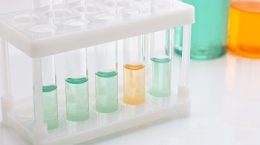Published on September 16, 2019
Key Points
- The GrassrootsHealth scientists’ consensus recommended range of vitamin D for general health is 40-60 ng/ml (100-150 nmol/L), based on overwhelming evidence about the association between vitamin D and many diseases; there is also evidence that levels above 60 ng/ml may provide additional benefit for breast cancer prevention and treatment of some diseases including psoriasis, asthma, rheumatoid arthritis, and tuberculosis
- Levels in excess of 150 ng/ml raise the concern for vitamin D toxicity which is most frequently diagnosed when levels are over 200 ng/ml, though not everyone who reaches that level experiences toxicity
- If you would like to decrease your vitamin D levels, vitamin D input must be reduced, which most often means cutting back on your dose of supplemental vitamin D, and possibly your sun exposure as well. However, before doing this, consider a few important things…
 We sometimes receive questions from participants about whether a vitamin D test result is too high if it came back higher than the recommended range of 40-60 ng/ml. In this blog we will explore what levels may be considered too high and what can be done if you want to reduce your levels.
We sometimes receive questions from participants about whether a vitamin D test result is too high if it came back higher than the recommended range of 40-60 ng/ml. In this blog we will explore what levels may be considered too high and what can be done if you want to reduce your levels.
Are vitamin D levels between 60 and 100 ng/ml too high?
Our scientists’ consensus recommended range of vitamin D status for general health is 40-60 ng/ml (100-150 nmol/L). This is based on overwhelming evidence about the association between vitamin D and many diseases including bone diseases (rickets, osteomalacia, and osteoporosis), multiple sclerosis, diabetes, cancer, and many others. There is also evidence that levels above 60 ng/ml may provide additional benefit for breast cancer prevention and treatment of some diseases including psoriasis, asthma, rheumatoid arthritis, and tuberculosis. GrassrootsHealth considers levels between 60 and 100 ng/ml to be the high end of a normal range and for a few, can be achieved through diet and sun exposure alone.
Are vitamin D levels over 100 ng/ml too high?
We do not currently have data to support any additional health benefit of having a level above 100 ng/ml. Levels in excess of 150 ng/ml raise the concern for vitamin D toxicity which is most frequently diagnosed when levels are over 200 ng/ml, though not everyone who reaches that level experiences toxicity. A meta-analysis of 15 clinical trials (chart below) found no toxicity below a vitamin D level of 200 ng/ml (500 nmol/L) or below a vitamin D intake of 30,000 IU/day.
What is vitamin D toxicity?
Vitamin D toxicity occurs when high vitamin D levels (typically, over 200 ng/ml) cause high calcium levels, called hypercalcemia. Symptoms of hypercalcemia include loss of appetite, feeling very thirsty, weight loss, constipation or diarrhea, abdominal pain, musculoskeletal pain, or feeling sick, confused, or tired.
What if a lower vitamin D level is desired?
Even if your level is not in the toxic range, it may be higher than you want it to be. If you would like to decrease your vitamin D levels, vitamin D input must be reduced. Most often that will mean cutting back on your dose of supplemental vitamin D, and possibly your sun exposure as well. However, before doing this, consider whether a recent change in intake, such as an extra-large dose during a sickness or a recent vacation to a sunny location, may have caused a temporary high level. If your intake has been consistent, reducing your dose by 25-50% may help, followed by a re-test after about 3 to 6 months to assess your response to the lowered dose. (It is very important to test again because you may have overcorrected and caused your levels to be lower than you want). It may take at least 2-3 months for the vitamin D level to fully respond to the new intake, as illustrated in the chart below showing the response in both vitamin D3 and 25(OH)D to a single dose of 100,000 IU vitamin D3.
Are you getting enough essential nutrients?
Testing your vitamin D level regularly and taking daily steps to keep it at a target level of 40-60 ng/ml (100-150 nmol/L) is important for all stages of health. Through GrassrootsHealth Nutrient Research Institute, you can also track your omega-3 status, inflammation levels, and levels of essential and toxic nutrients. Find out your levels today! Log on to the shop (click the link below) to get your tests and see for yourself if your level can be improved.
Make sure you track your results before and after, about every 6 months! Click Here to Access the Shop Page
How can I track my nutrient intake and levels over time?
To help you track your supplement use and nutrient levels, GrassrootsHealth Nutrient Research Institute has created an online tracking system called myData-myAnswers. For each specific supplement, you can track what days you take it, how much, and many other details. This will help you know your true supplemental intake and what patterns of use work for you to reach and maintain optimum nutrient levels. Check it out today!








